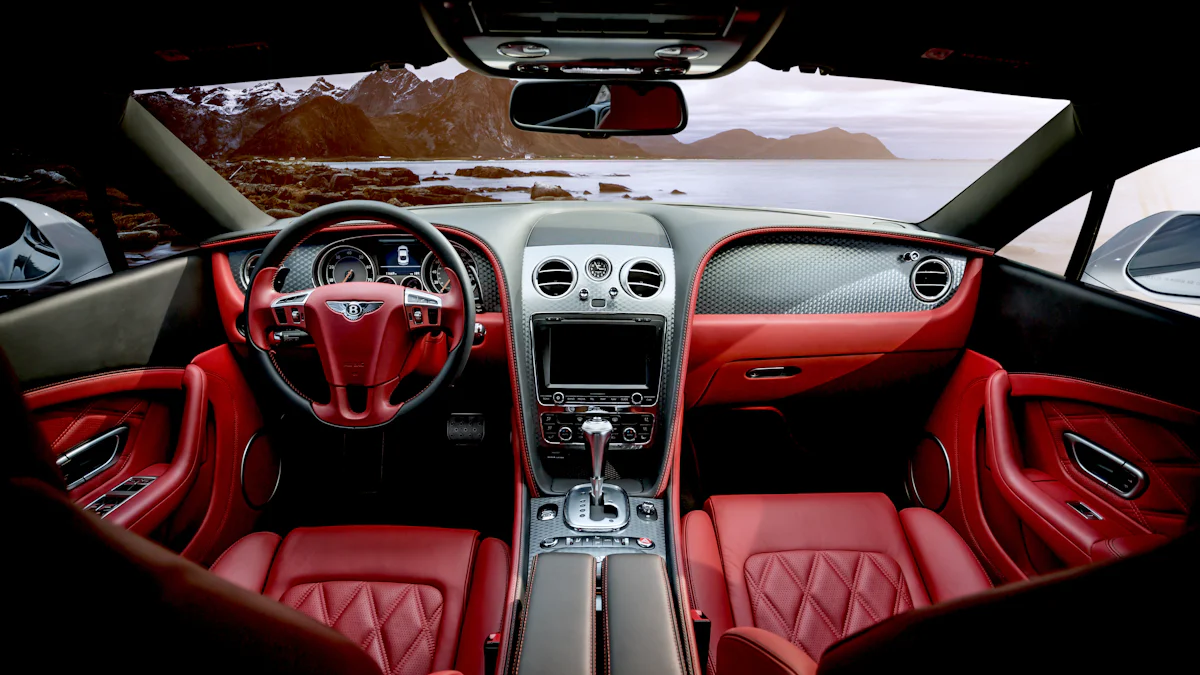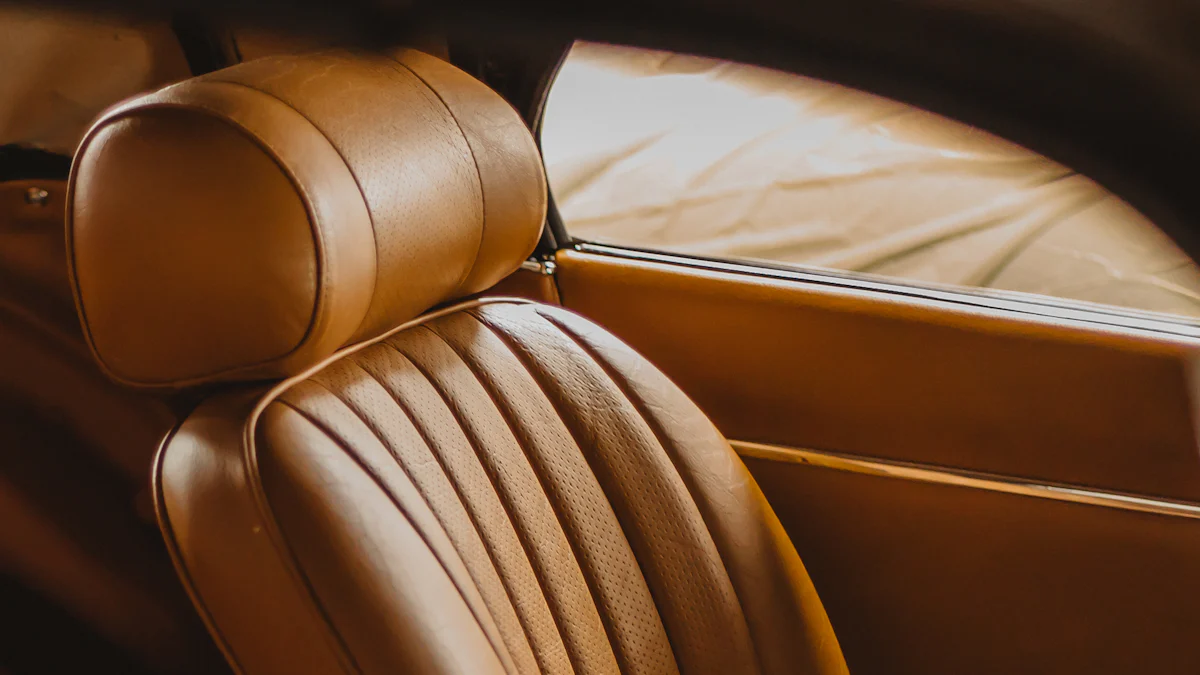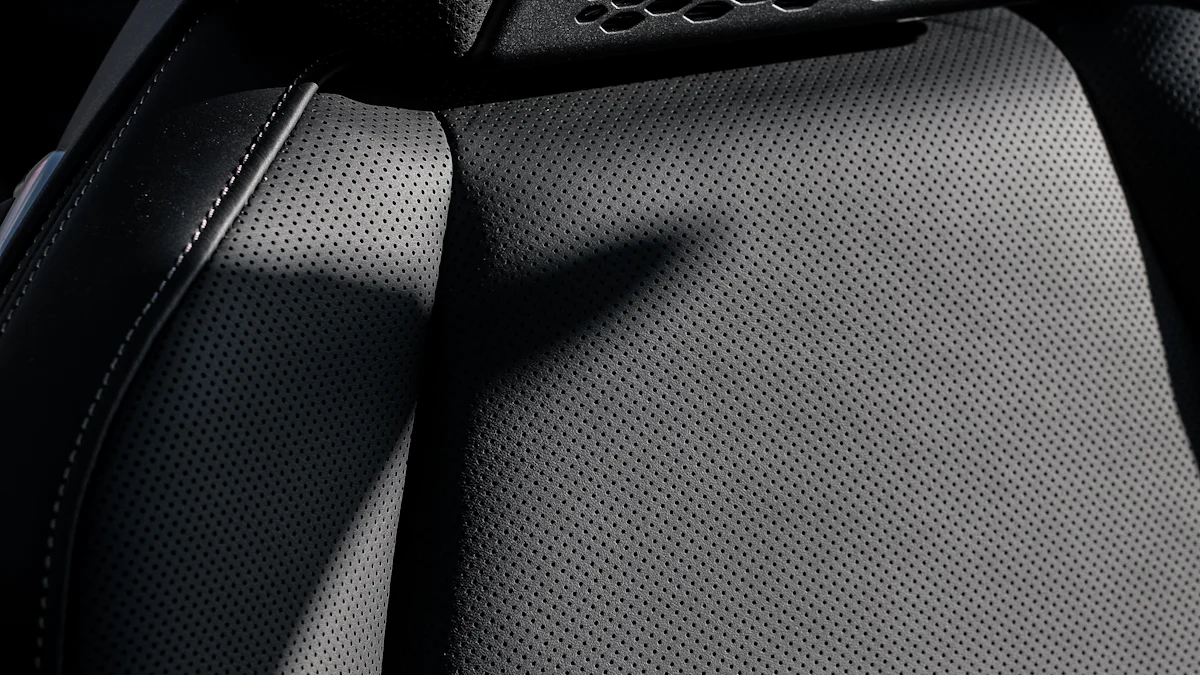
Car interior trims play a crucial role in enhancing both the aesthetics and functionality of a vehicle’s interior. Various materials, such as leather, fabric, vinyl, and Alcantara, offer unique benefits and drawbacks. The selection of automotive interior trim significantly impacts the overall driving experience, making it essential for consumers to understand their options.
Leather Trims

Advantages of Leather
Aesthetic Appeal
Leather often symbolizes luxury and sophistication in automotive interiors. The soft texture and plush feel enhance the overall aesthetic of a vehicle. Automakers frequently use leather for steering wheel linings, seat coverings, door panels, and glove compartment exteriors. This premium material significantly boosts the resale value of a car.
Durability
Leather offers exceptional durability compared to other materials. The longevity of leather means it can maintain its quality and appearance for years. Unlike cloth seats, which wear and tear more easily, leather seats require less frequent replacements. Properly maintained leather can last a lifetime.
Comfort
Leather provides a stylish and comfortable ride. The material feels soft and luxurious, adding to the overall comfort of the vehicle’s interior. Leather resists stains and liquids, making it easy to clean. Spills and dirt do not soak into leather immediately. A damp cloth can easily wipe off most stains.
Disadvantages of Leather
Cost
The premium perception of leather means automakers charge a higher price for leather seats. This added cost reflects the value attributed to leather as a luxury material. Consumers must consider this significant investment when choosing leather trims.
Maintenance
Leather requires special care to preserve its pristine condition. Regular cleaning and conditioning are necessary to prevent cracking and fading. Neglecting maintenance can lead to deterioration over time. Owners must invest time and effort to keep leather looking its best.
Environmental Impact
Leather production has a considerable environmental impact. The process involves the use of chemicals and significant water consumption. Additionally, the livestock industry contributes to greenhouse gas emissions. Consumers concerned about environmental sustainability may prefer alternative materials.
Fabric Trims
Advantages of Fabric
Affordability
Fabric trims offer a budget-friendly option for car interiors. Automakers use fabric as a cost-effective alternative to more expensive materials like leather. This affordability makes fabric an attractive choice for consumers looking to save money without sacrificing quality.
Variety of Designs
Fabric trims provide a wide range of design options. Manufacturers can produce fabric in various colors, patterns, and textures. This versatility allows for greater customization of the car’s interior. Consumers can choose designs that match their personal style and preferences.
Comfort
Fabric seats offer a high level of comfort. The material remains cool in hot weather and warm in cold weather. Unlike leather, fabric does not become sticky or uncomfortable during extreme temperatures. This makes fabric a practical choice for daily driving in diverse climates.
Disadvantages of Fabric
Stain Susceptibility
Fabric trims are prone to staining. Spills and dirt can easily penetrate the material, making stains difficult to remove. Regular cleaning is necessary to maintain the appearance of fabric seats. This susceptibility to stains can be a drawback for families with young children or pets.
Wear and Tear
Fabric seats are more susceptible to wear and tear compared to other materials. Over time, fabric can fray, fade, and develop holes. This reduces the overall lifespan of fabric trims. Frequent use and exposure to sunlight can accelerate this deterioration.
Maintenance
Maintaining fabric trims requires consistent effort. Regular vacuuming and occasional deep cleaning are necessary to keep fabric seats looking their best. Special cleaning products may be needed to remove stubborn stains. This ongoing maintenance can be time-consuming for car owners.
Vinyl Trims
Advantages of Vinyl
Cost-Effectiveness
Vinyl trims provide a budget-friendly option for car interiors. Manufacturers use vinyl to offer an affordable alternative to more expensive materials. This cost-effectiveness makes vinyl an attractive choice for consumers seeking value without compromising on quality.
Easy Maintenance
Vinyl trims require minimal effort to maintain. The material resists stains and spills, making cleaning straightforward. A simple wipe with a damp cloth can remove most dirt and grime. This ease of maintenance appeals to busy car owners who prioritize convenience.
Durability
Vinyl offers excellent durability. The material withstands daily wear and tear, maintaining its appearance over time. Vinyl does not easily crack or fade, ensuring a long-lasting interior trim. This durability makes vinyl a practical choice for high-traffic vehicles.
Disadvantages of Vinyl
Aesthetic Limitations
Vinyl trims may lack the luxurious appeal of other materials. The texture and appearance of vinyl do not match the sophistication of leather or Alcantara. Consumers seeking a high-end look might find vinyl less appealing.
Comfort
Vinyl does not provide the same level of comfort as fabric or leather. The material can become sticky in hot weather and cold in low temperatures. This lack of comfort can affect the overall driving experience, especially during extreme weather conditions.
Environmental Concerns
The production of vinyl involves the use of chemicals and non-renewable resources. This process contributes to environmental pollution. Although some manufacturers incorporate recycled materials, the environmental impact remains a concern. Eco-conscious consumers might prefer more sustainable alternatives.
Alcantara and Suede Trims

Advantages of Alcantara and Suede
Luxurious Feel
Alcantara and suede offer a luxurious feel that enhances the interior of any vehicle. The soft texture provides a premium touch, making the driving experience more enjoyable. Many high-end car manufacturers use these materials to elevate the cabin’s ambiance.
Aesthetic Appeal
The aesthetic appeal of Alcantara and suede is undeniable. These materials add a sophisticated look to the interior. The unique appearance of Alcantara and suede makes them popular choices for seat inserts, headliners, and lower door panels. The materials complement various interior designs, adding a touch of elegance.
Comfort
Alcantara and suede provide exceptional comfort. The materials remain cool in hot weather and warm in cold weather, ensuring a pleasant ride in any climate. The grip offered by Alcantara is particularly beneficial for track use, as it helps drivers stay firmly in their seats. This feature enhances both comfort and safety during high-performance driving.
Disadvantages of Alcantara and Suede
Cost
The cost of Alcantara and suede can be a significant drawback. These materials are more expensive than other options like fabric or vinyl. Consumers must consider the higher price when choosing these trims. The investment reflects the premium quality and luxurious feel of Alcantara and suede.
Maintenance
Maintaining Alcantara and suede requires special care. Regular cleaning is necessary to preserve the materials’ appearance and texture. Spills and stains can be challenging to remove, necessitating the use of specific cleaning products. Neglecting maintenance can lead to deterioration over time, affecting the overall look of the interior.
Durability
Durability can be an issue with Alcantara and suede. These materials are prone to wear and tear, especially in high-contact areas like steering wheels, gearshift levers, and armrests. The materials may show signs of aging faster than leather or vinyl. Proper care and maintenance can extend the lifespan, but consumers should be aware of the potential for quicker degradation.
Automotive Interior Trim: Other Materials
Wood Grain Trim
Advantages
Wood grain trim adds a touch of elegance and sophistication to car interiors. The natural patterns and rich textures create a luxurious ambiance. High-end vehicles often feature wood grain trim on dashboards, door panels, and center consoles. The unique appearance of each piece of wood ensures that no two interiors look exactly alike. This exclusivity enhances the overall aesthetic appeal.
Disadvantages
Wood grain trim requires careful maintenance to preserve its beauty. Exposure to sunlight can cause fading and discoloration. Moisture can lead to warping and cracking. Regular cleaning and conditioning are necessary to prevent damage. The cost of wood grain trim can be high, reflecting the premium nature of the material. Consumers must consider the ongoing care and initial investment when choosing wood grain trim.
Carbon Fiber Trim
Advantages
Carbon fiber trim offers several benefits for automotive interior trim. The material is incredibly lightweight, reducing the overall weight of the vehicle. This contributes to improved fuel efficiency and performance. Carbon fiber is also exceptionally strong, providing durability and resistance to wear and tear. The sleek, modern appearance of carbon fiber adds a high-tech aesthetic to car interiors. Many sports cars and luxury vehicles feature carbon fiber trim to enhance their performance-oriented design.
Disadvantages
The cost of carbon fiber trim can be prohibitive for some consumers. The manufacturing process is complex and expensive, leading to higher prices. Carbon fiber can feel cold to the touch, which may affect comfort in certain climates. The material’s rigid nature means it lacks the flexibility of other trims, potentially limiting its application in some areas of the interior.
Thermoplastics and Composites
Advantages
Thermoplastics and composites offer versatility and cost-effectiveness for automotive interior trim. Manufacturers can mold these materials into various shapes and designs, allowing for extensive customization. Thermoplastics are lightweight, contributing to fuel efficiency. The durability of these materials ensures long-lasting performance. Advances in plastic formulations have led to the development of sustainable alternatives, incorporating recycled and vegan materials. These innovations align with growing consumer demand for environmentally friendly products.
Disadvantages
Thermoplastics and composites may lack the premium feel of materials like leather or wood. The texture and appearance can appear less luxurious. Some thermoplastics may emit volatile organic compounds (VOCs), affecting air quality inside the vehicle. Proper ventilation and material selection can mitigate this issue. The environmental impact of plastic production remains a concern, despite efforts to use recycled content.
The blog explored various car interior trims, highlighting their unique advantages and disadvantages. Leather trims offer luxury and durability but require significant maintenance. Fabric trims provide affordability and comfort but are prone to stains and wear. Vinyl trims ensure cost-effectiveness and easy maintenance but lack aesthetic appeal. Alcantara and suede deliver a luxurious feel but come with high costs and maintenance needs. Other materials like wood grain, carbon fiber, and thermoplastics offer distinct benefits and drawbacks.
When choosing the right trim, consider individual needs and preferences. Prioritize both aesthetics and functionality to enhance the driving experience.
Post time: Jul-24-2024



